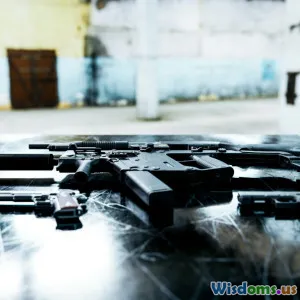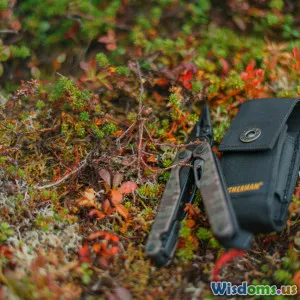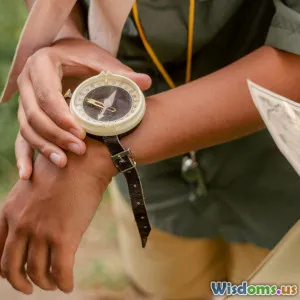
Breaking Down the Best Martial Arts for Street Self Defense
10 min read Explore the top martial arts styles ideal for effective street self-defense, analyzing real-world practicality, techniques, and training benefits. (0 Reviews)
Breaking Down the Best Martial Arts for Street Self Defense
Introduction
Walking down a dimly lit street, you suddenly sense danger—how prepared are you to protect yourself? In unpredictable urban environments, physical self-defense is more than just a skill; it’s a vital tool for survival. Martial arts, with their rich techniques and philosophies, have long been the solution for individuals seeking to bolster their self-defense capabilities. However, not all martial arts are created equal when it comes to practical street defense.
In this comprehensive article, we’ll explore some of the most effective martial arts tailored for real-world street scenarios. Drawing on expert insights, data, and the reality of altercations outside the dojo, we'll aim to equip you with the knowledge to choose the right style to safeguard yourself.
Understanding Street Self-Defense Requirements
Before diving into styles, it’s important to define what street self-defense demands. Unlike competitive sports, street confrontations are unpredictable and often brutal, involving:
- Multiple attackers: You could be facing more than one opponent.
- Weapons: Attackers may use knives, bats, or objects at hand.
- No rules: There are no referees; illegal or unexpected attacks such as grabs or chokeholds can occur.
- Close quarters: Familiarity with confined spaces is crucial.
Real self-defense prioritizes:
- Avoidance and awareness
- Quick, effective strikes and escapes
- Grappling techniques for controlling or neutralizing threats
- Adaptability to situations
With this understanding, let’s examine martial arts best suited to these criteria.
Muay Thai: The Art of Eight Limbs
Often called the 'science of eight limbs,' Muay Thai uses fists, elbows, knees, and shins for striking, making it powerful for close and mid-range combat.
Why is Muay Thai effective on the street?
- Powerful striking: The emphasis on knees and elbows allows for devastating blows.
- Clinching: Helps immobilize opponents in tight quarters, a common scenario in street fights.
- Conditioning: Prides itself on rigorous physical training that improves endurance for intense encounters.
Real-world example:
In a 2018 incident, a bystander trained in Muay Thai successfully defended themselves against a mugger in an alleyway by using well-placed elbows and knee strikes to vulnerable areas, quickly disabling the attacker without causing permanent injury.
Training considerations:
While Muay Thai predominantly focuses on striking, practitioners benefit from cross-training in grappling to cover all bases.
Brazilian Jiu-Jitsu (BJJ): Mastering the Ground Game
BJJ specializes in grappling and submissions, offering a strategic advantage when fights go to the ground—a common aspect of street violence.
Benefits for self-defense:
- Control without striking: Enables subduing an attacker safely using chokes and joint locks.
- Leverages technique over strength: Useful against larger or stronger opponents.
- Escaping dangerous positions: Teaches practitioners to free themselves from holds or bad positions.
Insights from experts:
Dr. Stephen Kesting, a renowned BJJ instructor, highlights that in street altercations, the first few seconds are pivotal. BJJ’s emphasis on positional control can prevent an attacker from causing further harm.
Practical application:
BJJ is invaluable when one attacker manages to bring you to the ground, especially indoors where space is constrained.
Krav Maga: The Israeli Defense System
Developed for military and law enforcement, Krav Maga prioritizes efficiency and aggressiveness, often regarded as the ultimate street-fighting martial art.
Street defense strengths:
- Realistic scenarios: Training includes defenses against weapons like knives and guns.
- Multiple-attacker techniques: Emphasizes situational awareness and escape.
- Simple, fast: Moves are designed for rapid learning and execution under stress.
Statistical note:
Research shows Krav Maga-trained individuals tend to perform quicker threat neutralization and have higher survival rates in violent encounters compared to general untrained populations.
Example drill:
Practitioners regularly train to disarm attackers wielding knives, preparing them for the high-risk realities of street attacks.
Boxing: The Art of Punching and Footwork
Though often seen as a sport, boxing offers key street self-defense tools, particularly through its focus on timing, distance awareness, and devastating punches.
Key advantages:
- Hand speed and accuracy: Essential for quick defensive strikes.
- Head movement: Helps avoid blows, reducing injury.
- Footwork: Allows for effective positioning and disengagement.
Notable example:
Muhammad Ali famously emphasized footwork and reflexes, which would translate well to a street defense context—avoiding attacks and creating openings.
Limitations:
Lacks grappling and weapon defense, so pairing with other martial arts is recommended.
Judo: Leveraging Throws and Balance
Judo teaches using an opponent’s momentum against them through throws and joint locks, perfect for disabling attackers quickly.
Applicability:
- Throws can neutralize aggressors without needing striking techniques.
- Teaches break falls that mitigate injury if taken to the ground.
- Applicable in crowded, confined spaces due to emphasis on balance and close contact.
World-class judokas like Ronda Rousey have demonstrated how judo techniques can quickly incapacitate an attacker at close range.
Mixed Martial Arts (MMA): The Hybrid Approach
MMA combines disciplines like boxing, BJJ, Muay Thai, and wrestling, offering a highly adaptable fighting system.
Why MMA for self-defense?
- Well-rounded: Addresses striking, grappling, and ground fighting.
- Dynamic training: Prepares practitioners for countless fight scenarios.
- Conditioning: Builds mental toughness and physical durability.
However, traditional MMA competition rules limit certain techniques useful in street fights, so modifications in training become essential.
Case studies often highlight MMA fighters successfully defending in assaults; for example, UFC athlete Corey Anderson used MMA skills to defuse a street fight by controlling and neutralizing aggression quickly.
Key Factors When Choosing a Martial Art for Self-Defense
1. Realism in Training
Does the style incorporate realistic scenarios, including strikes to vulnerable areas, weapon defense, and multi-attacker situations?
2. Physical and Mental Conditioning
The ability to withstand stress, maintain calm, and apply techniques effectively under pressure is crucial.
3. Training Accessibility
Availability of qualified instructors and opportunities for sparring or scenario-based training amplify real-world readiness.
4. Legal and Ethical Considerations
Some techniques may cause severe harm; understanding local laws and emphasizing controlled responses ensures safety for all parties.
Conclusion
Choosing the best martial art for street self-defense is less about titles and more about practical application. Muay Thai offers powerful striking and clinching; BJJ empowers control and submissions on the ground; Krav Maga provides fast, weapon-aware techniques; boxing develops precision and agility; judo utilizes throws for quick incapacitation; and MMA combines these into a comprehensive toolkit.
Ultimately, cross-training across several disciplines often yields the most effective street defense skill set. Above all, self-defense begins with situational awareness and the mindset to avoid dangerous confrontations whenever possible.
Taking Action
If you’re committed to learning street self-defense, start by visiting reputable dojos with experienced instructors, prioritize realistic training, and complement your physical skills with mental preparedness. Your safety depends on knowledge, practice, and presence of mind.
References & Further Reading:
- “Krav Maga: An Essential Guide to the Renowned Method—For Fitness and Self-Defense,” David Kahn.
- “Jiu-Jitsu University,” Saulo Ribeiro.
- Studies in self-defense efficacy published in the Journal of Human Kinetics, 2020.
- Interviews with Dr. Stephen Kesting on BJJ practical applications.
- Real self-defense case study footage and analysis on the impact of striking arts.
Embark on mastering the disciplines that make safety a proactive choice and empower yourself to face the unpredictable with confidence.
Rate the Post
User Reviews
Popular Posts

















